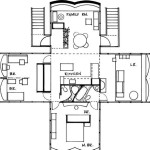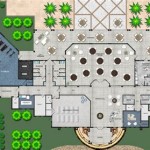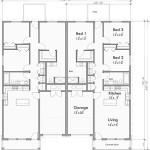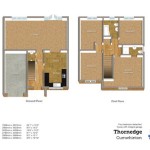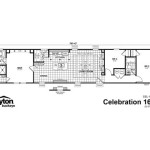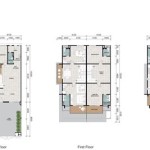How To Draw Your Own House Extension Plans
Drawing preliminary house extension plans can be a rewarding process, allowing homeowners to visualize and refine their ideas before engaging professionals. While architect-stamped blueprints are necessary for permitting and construction, initial sketches can significantly aid in clarifying design goals and communicating effectively with architects and builders.
This guide outlines the steps involved in creating basic extension plans. It is crucial to remember that these self-drawn plans are not a substitute for professional architectural drawings. They serve as a starting point for discussions and provide a visual representation of the desired outcome.
1. Assess Existing Space and Needs: Begin by thoroughly evaluating the current house layout. Identify the areas needing expansion and define the purpose of the extension. Consider factors like family size, lifestyle changes, storage requirements, and desired functionality. Documenting these needs will guide the design process.
2. Measure Existing Structures: Accurate measurements are essential for creating realistic plans. Using a tape measure, meticulously record the dimensions of the existing house, including walls, windows, doors, and any relevant fixtures. Note the locations of utilities such as gas lines, electrical outlets, and water pipes. These measurements form the foundation of the plan.
3. Research Local Building Codes: Before designing the extension, research local building regulations and zoning ordinances. Restrictions on building height, setbacks, and permitted building materials can significantly impact the design. Contact the local planning authority to obtain specific information relevant to the property.
4. Choose Drawing Tools: Several options exist for creating the drawings. Graph paper provides a grid for accurate scaling and proportions. Alternatively, computer-aided design (CAD) software offers more advanced tools for creating detailed plans, though it requires a learning curve. Simple drawing software or even online tools can be suitable for basic sketches.
5. Create a Base Plan: Start by drawing the existing house layout to scale on the chosen medium. Accurately represent the exterior walls, interior partitions, windows, doors, and fixed elements. This base plan serves as the framework for adding the proposed extension.
6. Sketch the Extension: Once the base plan is complete, begin sketching the proposed extension. Experiment with different shapes, sizes, and configurations, considering the intended function and how the addition will integrate with the existing structure. Focus on the overall layout and flow between the old and new spaces.
7. Add Internal Walls and Features: After finalizing the extension’s outer dimensions, draw the internal walls, creating the desired room layout within the expanded space. Include the placement of windows, doors, and any built-in features like fireplaces or cabinets. Consider the natural light and ventilation within the new rooms.
8. Indicate Rooflines and Elevations: Sketch the rooflines of the existing house and the proposed extension, ensuring a harmonious integration. Consider the roof pitch, style, and materials. Basic elevation drawings, showing the exterior walls of the house and extension from different viewpoints, can also be included to provide a more complete visual representation.
9. Label and Annotate: Label all rooms, walls, windows, doors, and other features clearly on the plan. Add dimensions to indicate the sizes of each element. Annotations providing details on materials, finishes, or specific construction notes can enhance the clarity of the plans.
10. Review and Refine: Once the initial plan is complete, review it carefully. Check for any inconsistencies or potential issues. Consider the flow of space, functionality, and aesthetic appeal. Refine the plan as needed, incorporating any changes or improvements. Multiple iterations are common during this process.
11. Consult with Professionals: These self-drawn plans serve as a valuable starting point for consultations with architects and builders. They provide a visual representation of the desired outcome and facilitate communication regarding specific requirements and preferences. Professionals will develop detailed, technical drawings based on these initial sketches, incorporating structural calculations, building code compliance, and other essential details.
Tools and Resources: Several resources can assist in drawing house extension plans. Online tools and software offer templates and drawing functionalities. Architectural graphic standards provide guidance on drawing conventions and symbols. Books and online tutorials offer further information on architectural drawing techniques.
Drawing preliminary house extension plans is a valuable exercise for homeowners. It allows for the exploration of different design options and provides a visual framework for communicating effectively with professionals. While these self-drawn plans are not a replacement for professional architectural drawings, they serve as a crucial first step in the process of realizing a house extension project.

Hiring An Architect To Draw The Extension Plans My

Can I Draw My Own Plans For An Extension

Extension Plans Free Design 3d House Ideas User 8916374 By Planner 5d

House Extension Planner

House Extension Planner

Proposed Elevations Plan Design Single Y Rear Extension Floor Plans

House Extension Planner

House Extension Planner

Extension Layout Ideas How To Design The Best Home 2024 Edition Urbanist Architecture Small Company London

House Extension Planner

